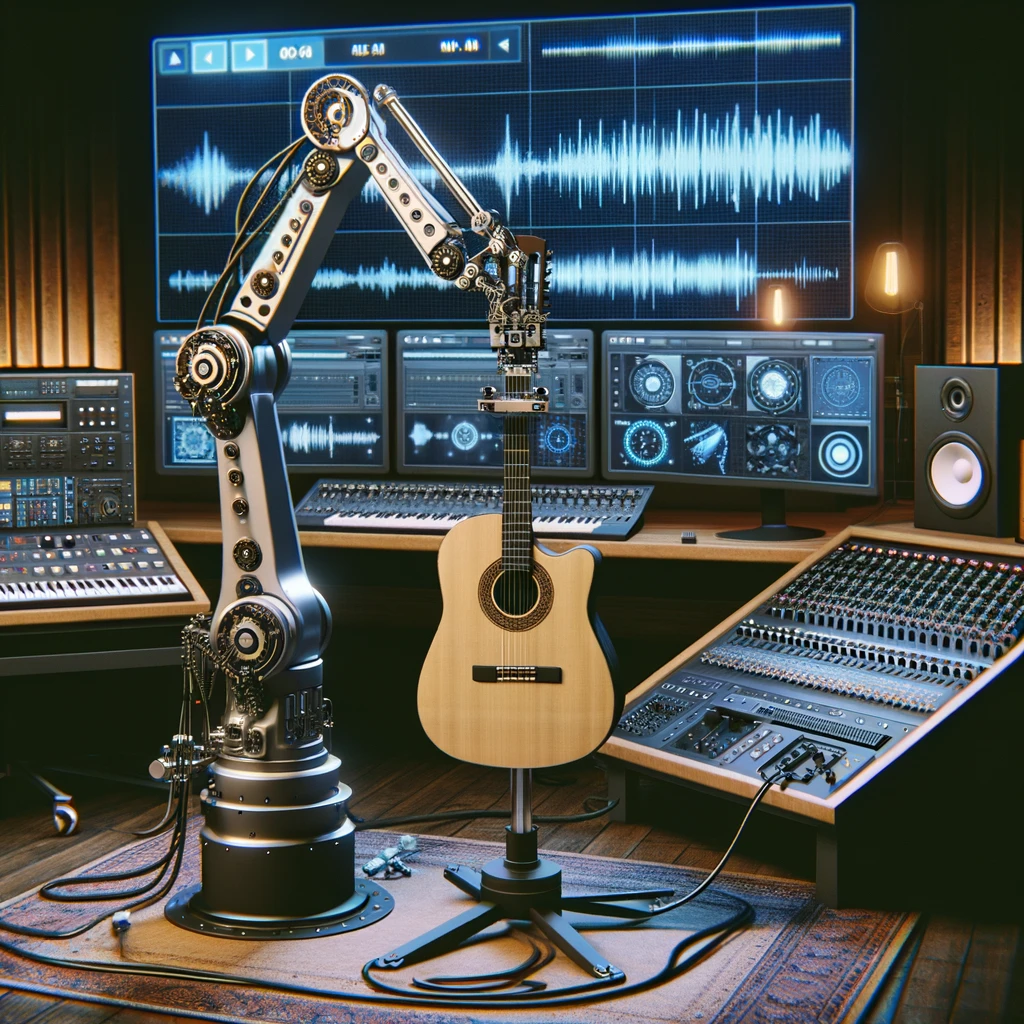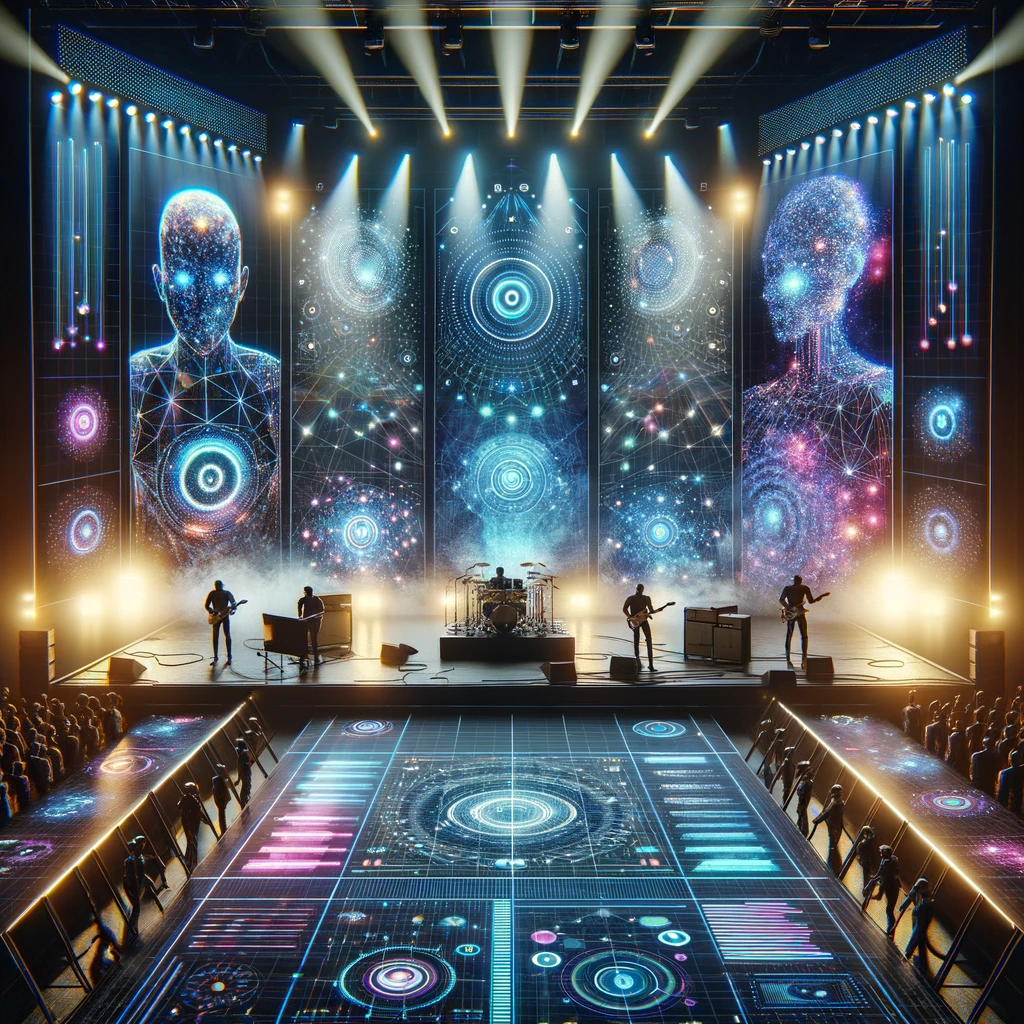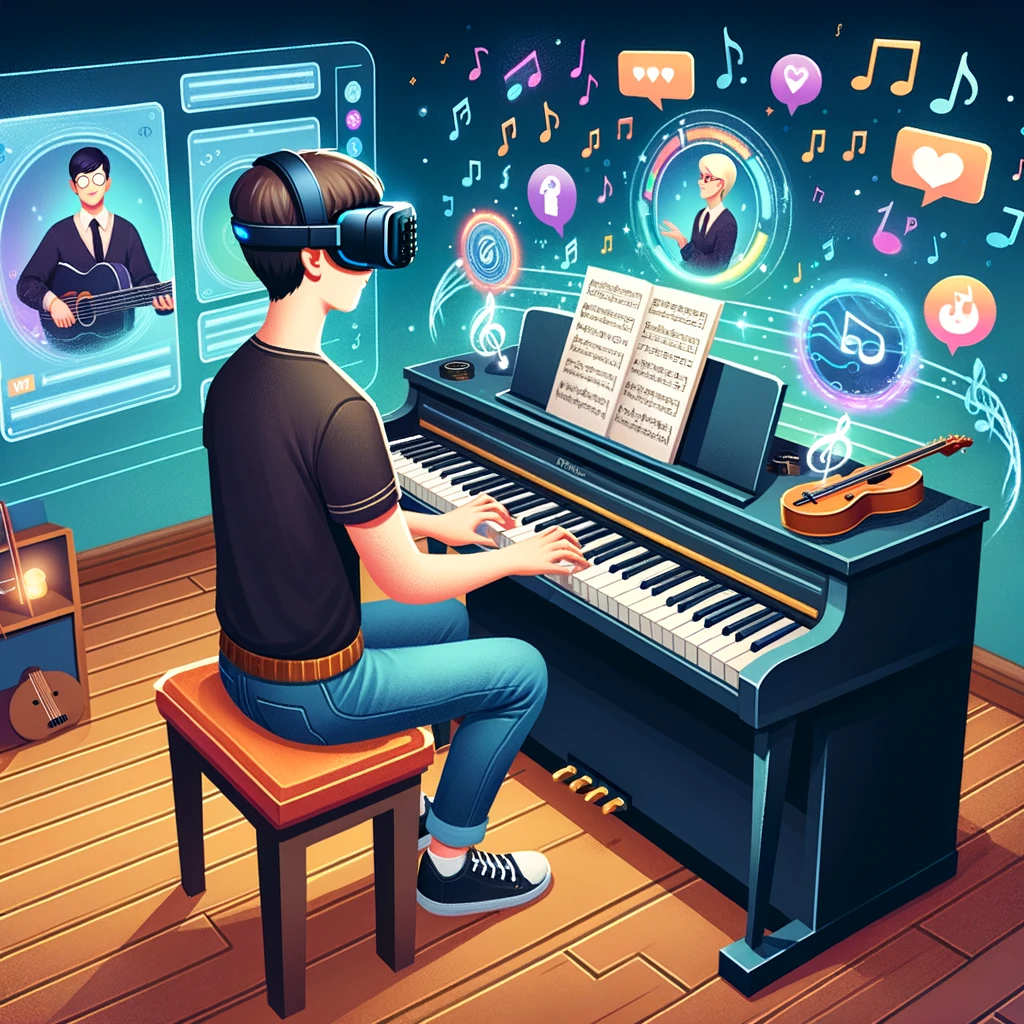Exploring AI in Music Instrument Calibration, Acoustic Analysis, Learning, and Virtual Reality Instruments
By: ChatGPT
Originally Generated: November 12, 2023
Introduction
The integration of Artificial Intelligence (AI) and Virtual Reality (VR) in the realm of music is transforming how we interact with and understand musical instruments. From AI-powered instrument tuning to VR instruments for beginners, the landscape of music is evolving, offering new ways to create, learn, and experience music. This article explores these groundbreaking developments, providing insights into how technology is reshaping the musical world.
AI in Instrument Calibration and Tuning
Recent advancements in AI have significantly impacted musical instrument calibration and tuning. A notable example is MIT’s PixelPlayer, a deep learning AI algorithm capable of isolating soundwaves from individual instruments in a video. This tool can recognize the pixels where the sound is emanating, enabling the tuning of individual frequencies without human annotations. PixelPlayer can distinguish sounds from over 20 common instruments and potentially more with additional training. This development offers musicians a novel way to repair or restore old concert footage and experiment with different sound combinations.

AI in Acoustics Analysis and Live Music
AI’s influence extends to live performance, enhancing the musical experience through personalized setlists, intelligent lighting, realistic virtual backgrounds, and smart instruments. AI algorithms can analyze streaming data and audience preferences to tailor setlists, while AI-powered lighting systems sync with the music to create immersive visual experiences. Moreover, smart instruments, adjusted in real-time to the performer’s style, can create new sounds and styles, previously impossible with traditional instruments.

Learning Musical Instruments with AI and VR
The advent of AI and VR technologies is revolutionizing musical education. For example, Brisbane-based software engineer Stephen Phillips, president of the start-up Popgun, focuses on teaching computers to play instruments like the piano. This technology aims to replicate the experience of playing with another human, a key factor in musical learning. Additionally, artists are leveraging AR and VR to create new types of immersive musical experiences, storytelling, and videos. These technological advancements offer musicians innovative ways to engage with their audience and explore new creative frontiers.
Virtual Reality (VR) is also emerging as a powerful tool for beginners learning musical instruments. Virtuoso, a VR musical sandbox, allows users to explore a range of unique instruments specifically designed for VR. These instruments include the Empads, Oorgan, and others, equipped with features like Tempo Sync and high-quality synthesizer patches, making it accessible for complete beginners and powerful for experienced musicians. This platform exemplifies how VR can democratize music learning and creation, making it more accessible and affordable for aspiring musicians.
